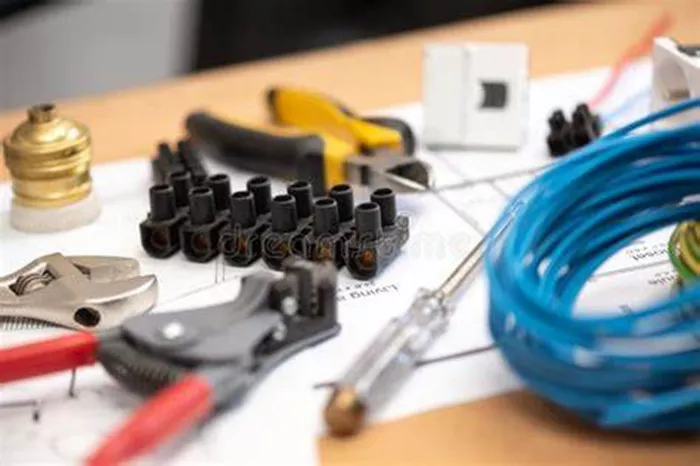Electrical equipment refers to any device or system that uses electricity to perform specific functions within power generation, transmission, distribution, or utilization networks. These components form the backbone of modern electrical infrastructure, enabling the safe and efficient operation of industrial, commercial, and residential power systems.
Transformers serve as a prime example of essential electrical equipment, playing a critical role in voltage regulation and power distribution. These devices operate on electromagnetic induction principles to step up or step down voltage levels while maintaining power consistency across electrical networks.
Categories of Electrical Equipment
Electrical equipment can be broadly classified into several categories based on function and application. Power generation equipment includes generators and alternators that convert mechanical energy into electrical energy. Transmission equipment consists of transformers, circuit breakers, and transmission lines that facilitate bulk power transfer.
Distribution equipment encompasses switchgear, distribution transformers, and protective relays that deliver electricity to end users. Utilization equipment covers motors, lighting systems, and appliances that consume electrical energy for practical applications. Each category contains specialized components designed for specific operational requirements and environmental conditions.
Power Generation Equipment
This category includes devices responsible for producing electrical energy from various energy sources. Generators convert mechanical rotation into alternating current through electromagnetic induction, while solar inverters transform direct current from photovoltaic panels into grid-compatible alternating current.
Transmission and Distribution Equipment
High-voltage transformers dominate this segment, enabling efficient long-distance power transmission by reducing current and associated line losses. Circuit breakers and disconnect switches provide protection and control capabilities, ensuring safe operation during normal and fault conditions.
Utilization Equipment
End-user devices range from industrial motors to household appliances, all designed to convert electrical energy into useful work. These components must comply with strict safety and efficiency standards to ensure reliable performance throughout their service life.
Transformers as Core Electrical Equipment
Transformers represent one of the most vital pieces of electrical equipment in power systems. These static devices transfer electrical energy between circuits through electromagnetic induction without changing frequency. Their ability to modify voltage levels makes them indispensable for both power transmission and distribution applications.
Power transformers handle bulk energy transfer at transmission voltages, typically ranging from 69 kV to 765 kV. Distribution transformers operate at lower voltages, supplying power directly to commercial and residential consumers. Specialized transformer types include instrument transformers for measurement and protection, along with autotransformers for voltage adjustment in specific applications.
Transformer Construction and Operation
A basic transformer consists of two or more coils wound around a laminated steel core. The primary winding receives electrical energy from the source, while the secondary winding delivers energy to the load. Core design and winding configurations vary depending on voltage class and application requirements.
Efficiency and Performance Considerations
Transformer efficiency depends on core losses and copper losses, with modern designs achieving efficiencies exceeding 99% at full load. Proper cooling systems maintain optimal operating temperatures, while insulation materials ensure long-term reliability under varying electrical and thermal stresses.
Standards and Safety Requirements
Electrical equipment must comply with international and national standards to ensure safety and interoperability. Organizations like IEEE, IEC, and ANSI establish guidelines for design, testing, and operation of electrical components. These standards address insulation coordination, temperature rise limits, and short-circuit withstand capabilities.
Safety considerations include proper grounding, overcurrent protection, and arc flash mitigation. Regular maintenance and testing procedures help maintain equipment performance while minimizing operational risks. Transformer-specific standards cover dielectric testing, load loss measurements, and sound level requirements for various installations.
Insulation and Dielectric Testing
High-voltage equipment undergoes rigorous dielectric testing to verify insulation integrity. These tests simulate operational stresses to ensure reliable performance throughout the equipment’s service life. Partial discharge measurements help detect potential insulation weaknesses before catastrophic failures occur.
Environmental Considerations
Modern electrical equipment designs increasingly focus on environmental sustainability. Dry-type transformers eliminate oil-filled designs to reduce fire risks and environmental contamination. Energy-efficient components help reduce overall system losses, contributing to lower carbon emissions in power networks.
Future Trends in Electrical Equipment
Technological advancements continue reshaping electrical equipment design and functionality. Smart transformers incorporate monitoring and communication capabilities for predictive maintenance and grid optimization. Solid-state transformer concepts promise greater control flexibility and power quality improvements in future distribution systems.
Material science innovations are introducing new magnetic core materials and high-temperature superconductors that could revolutionize transformer efficiency and power density. Digital twin technology enables real-time performance monitoring and lifetime prediction for critical electrical assets.
Integration with Renewable Energy Systems
Electrical equipment must adapt to accommodate increasing renewable energy penetration. Smart inverters and flexible transformers help manage variable generation patterns while maintaining grid stability. These adaptations ensure traditional electrical infrastructure remains compatible with distributed energy resources.
Cybersecurity in Electrical Equipment
As equipment becomes more interconnected, cybersecurity measures grow increasingly important. Protection against unauthorized access and malicious attacks now forms an integral part of electrical equipment specifications, particularly for devices connected to smart grid infrastructure.
Conclusion
Electrical equipment encompasses a vast array of devices that form the foundation of modern power systems. From massive power transformers to miniature circuit breakers, these components work together to deliver reliable electricity across vast distances. Understanding their definitions, functions, and operational principles remains essential for electrical engineers and power system operators alike.
The continuous evolution of electrical equipment promises to address emerging challenges in energy efficiency, renewable integration, and smart grid development. As technology progresses, these components will play an even greater role in shaping sustainable and resilient power networks for future generations.
Related Topics:

